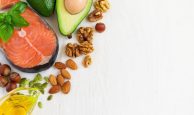What is vitamin K?
Vitamin K is a fat-soluble vitamin that is part of the group of micronutrients, which are essential to carry out blood clotting and to keep bones and arteries in proper condition.
Vitamins that belong to the fat-soluble group are those that are digested and they absorb in the same way as the fats that we can obtain through diet. They are stored in fatty tissue and are used by the body when it requires them. Unlike the water-soluble ones, vitamin K is not excreted in the urine.
Vitamin K needs bile salts to be absorbed in the intestine and the lipo proteins VLDL and LDL for transport.
The two types of vitamin K
Vitamin K, either obtained through a supplement, or Ingested through food, it can be found in two different forms:
Vitamin K1 or phylloquinomes:
This type is absorbed in the small intestine. Participates in the production of prothrombin, a protein involved in being able to carry out blood clotting.
Vitamin K2 or menaquinones:
This form of vitamin K is assimilated in the small intestine and colon.
Activates the GLA protein. It is especially relevant to activate osteocalcin, which is responsible for depositing calcium in the bones and which has a synergistic effect with vitamin D, in bone formation and in the prevention of osteoporosis. Also, it reduces the deposits that we can find in the arteries of calcium.
The microbiota of our organisms is capable of synthesizing K2 from K1 . It is not usual to suffer a deficit in either of the two forms since they are reused.

What are the natural sources of vitamin k?
Vitamin k is naturally found in fruits and vegetables. There are also a multitude of supplements to choose from in case their consumption is insufficient in our diet.
Vegetables : vitamin K is mainly found in green leafy ones like broccoli , spinach, cabbage or asparagus. We can also find it but, in very insignificant quantities, in onion.
In fruits such as kiwi, blueberries and blackberries. Other relevant sources of vitamin K: it is soy and tea.
Any source of animal origin?
Yes, the Vitamin K can be obtained from some meats and fish, such as mackerel or salmon and quail or turkey.
What type of vitamin K are we getting? >
Through diet, we can only obtain one type of vitamin K: vitamin k1 or phylloquinomes.
vitamin K2 is produced by bacteria within the body from k1. What, something we can do to keep these bacteria healthy is to take care of our intestinal microbiota . For this, we can ingest fermented foods such as yogurt, kefir, or tempeh. It is one of the best forms of vitamin K, which has greater bioavailability and bioactivity than other forms, as well as a better absorption rate.
Properties and characteristics
-
- Its main property is the involvement in blood coagulation.
- Calcium regulation : It contributes to the protection of bones. It is involved in bone metabolism. Vitamin K supplementation is recommended for people with osteoporosis, and generally for people with bone problems.
- Protects the arteries as it regulates calcium in the arterial walls.
- Activates the GLA protein, which by mobilizing that calcium, prevents it from accumulating in the form of atherosclerotic plaque or calcium deposits.
- Increases the activation of osteocalcin.
It can be of great use to reduce the risk of diabetes since it improves the sensitivity to insulin.

Can there be an excess of vitamin k?
No. The proteins responsible for carrying out blood clotting have a maximum absorption capacity. The moment it is overcome, they will stop using it. Over-clotting cannot occur in the blood.


